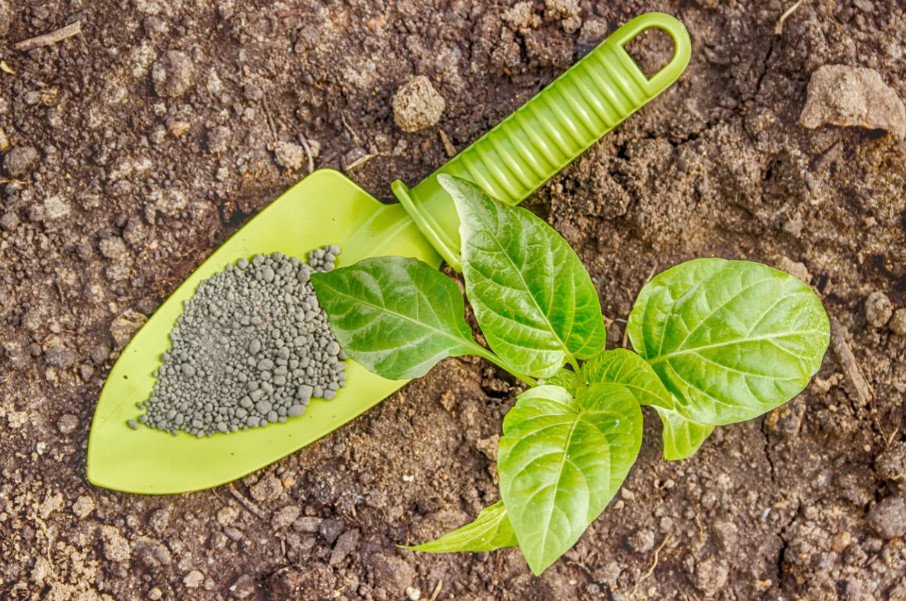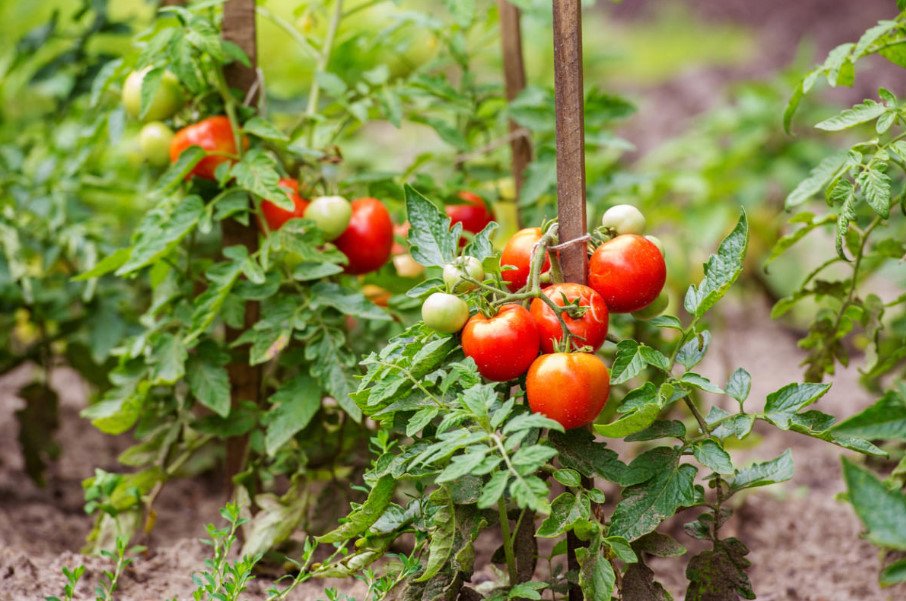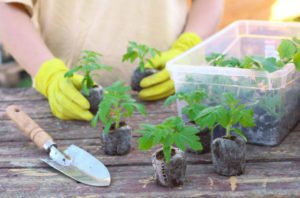
Phosphorus affects the flowering of plants, the formation of fruits and the maturation of the crop, and in perennial crops – also on winter hardiness.
How does phosphorus deficiency manifest itself and what does it lead to?
If vegetable crops are deficient in phosphorus, this inhibits their growth; the color of the leaves changes to dark green with a bluish or purple hue, the stems and petioles turn dark purple or purple. The root system develops poorly, the harvest is delayed, and the resistance to diseases decreases. Potatoes have a reduced starch content in the tubers, and their taste deteriorates. Phosphorus starvation is particularly strong in young plants and newly planted seedlings.
In fruit crops, phosphorus deficiency manifests itself in the form of poor growth, the formation of short, thin shoots; possibly, the death of the apical bud. Old leaves wither, acquire a bluish-green or bronze hue, young leaves become small, become narrow. The buds bloom late, the flowering is weak, the fruits fall off strongly, and in autumn the plant begins to shed its leaves early. Winter hardiness of plants is reduced.

A good supply of phosphorus, especially in the early stages of growth, is required by beets and carrots; this can have a noticeable effect on the yield of tomatoes. Apple, peach, blackcurrant and strawberry are sensitive to phosphorus deficiency. It is important to keep in mind that adult trees and shrubs may not have a deficit immediately: the plant is able to compensate for it for some time at the expense of its own reserves.
Most often, the problem occurs on acidic soils with a low content of organic matter, so it is necessary to control the level of acidity and deoxygenate the soil in time, if necessary.
What are phosphorus fertilizers
Fertilizers used to quickly compensate for phosphorus deficiency are made from natural phosphates-apatite and phosphorite. Effectively making them at the same time as organic ones.
When choosing, it should be taken into account that phosphorous fertilizers differ in the degree of solubility in water and are:
- soluble (superphosphates);
- low-soluble (phosphate rock);
- insoluble (precipitate).
In agricultural practice, the following types of phosphorus fertilizers are used:
The simple superphosphate
Available in powder or granules; phosphorus content from 15 to 21%. It is soluble in water, easily absorbed by all cultures. It is used for the main application of fertilizers and for top dressing on all types of soils, optimally-in a mixture with humus.
Recommended dose: as a general fertilizer from 30 to 60 g (1-2.1 oz) per square meter. m for top dressing from 15 to 25 g (0.5-0.9 oz) per sq. m.
Help (how to measure the desired dose of fertilizer): matchbox – 24 g (0.84 oz) of powder or 22 g (0.77 oz) of granules; tablespoon-18 g (0.63 oz) of powder or 17 g (0.6 oz) of granules; teaspoon-6 and 5 g (0.2-0.17 oz), respectively.
Acidic soil is recommended to be limed before using simple superphosphate; the fertilizer itself does not affect the acidity of the soil. Powdered superphosphate is stored in dry rooms so that it does not shrink, absorbing moisture.
Superphosphate double
It is often produced in granules; the phosphorus content is 45%. It is highly soluble in water. It is used for all crops on all types of soil, usually for liquid fertilizers. The concentration of phosphorus differs from simple superphosphate.
Recommended dose: as the main fertilizer – from 14 to 28 g (0.5-1 oz) per square meter, for top dressing-10 g (0.35 oz) per square meter.
Help (how to measure the desired dose of fertilizer): matchbox-20 g (0.7 oz), tablespoon-15 g (0.52 oz), teaspoon-5 g (0.17 oz).
Phosphate rock
The phosphorus content is from 20 to 30%. This fertilizer is crushed phosphates of natural origin. It is poorly soluble in water and contains phosphorus in a form that is difficult for plants to reach. It has a long-lasting effect: under the influence of soil microflora and chemical reactions in the soil, phosphorus from phosphorus flour gradually turns into forms absorbed by plants.
It is used for application when digging the site or adding to peat or manure compost (3-5 kg/6.6-11 lb per 100 kg/220 lb of manure or compost), embedding in peat or humus soil mixtures. The fertilizer is unsuitable for application when planting in nests or rows.
Reference (how to measure the desired dose of fertilizer): matchbox – 35 g (1.2 oz), tablespoon – 26 g (0.9 oz), teaspoon – 9 g (0.3 oz)
This fertilizer is particularly effective on acidic soils; its use on soils with a neutral or alkaline reaction is impractical. It is good to use phosphoric rock together with acidic nitrogen and potash fertilizers, manure. If the soil requires liming, then the phosphate rock is used either before it, or 2-3 years after the lime is applied.
In addition to the above – mentioned-most common-phosphorus fertilizers, bone meal (up to 30% phosphorus), sediment (from 25 to 38% phosphorus) are also used.




Leave a Reply